by Lisha Vidler
Note: This article originally appeared at Your Wardrobe Unlock’d. It has been revised since then. All images can be enlarged by clicking.
~~*~~
Have you ever wanted to draw your own fashion sketches? In this two-part article, we’re learning the basics of making a croquis. Previously, we looked at how to proportion your model using the concept of 8 heads, how to pose your figure, add realistic facial features, and how to draw hands and feet. Now let’s learn how to draw hair (including curls and braids), how to use shadows and highlights to add depth to your drawing, how to draw fabric, and add color. Finally, you can put everything you’ve learned together for a fashion sketch that you’re proud of!
Adding Detail: Hair
Hair is important because, for one, nearly everyone has some, and because it frames the face and adds dimension to your model. Keep in mind that, unless it’s slicked flat, hair is always taller than the top of the head.
Sketch an outline of how you want the hair to be styled, whether that’s short and sassy, long and elegant, a severe bun, or playful braids. If your model is posed dynamically, you might allow her hair to move, as if she’s in motion. If she’s merely standing there, however, you can have hair that falls straight. Remember gravity: if your model is leaning to one side, her hair will fall toward the ground.
Even though hair is composed of thousands of individual strands, you don’t see the strands from a distance. Instead, you see masses of color and shape. That’s what you must draw. Keep in mind that the edges will look more real if they’re jagged and wispy, instead of solid lines.
Add light and shadows to give the hair three-dimensionality, but don’t go overboard. This is a sketch, not a detailed portrait. Highlights will appear where the light hits the hair, curving along the shape of the head, touching the edges of curls or braids. Shadows will be darkest along the scalp, where the hair curves over itself, and where the hair disappears into a ponytail or braid.
The sketch below was done in shades of gray so you could see the light and dark areas without being distracted by color. Notice the lightness of the part (where the scalp shows through) and how the hair grows darker as it curves away from the light.
When drawing an updo, such as a bun or French twist, use shadow and highlights to give shape to the head. There will be a shadow where the hair tucks in on itself. Consider adding wisps of hair in front of the ears, at the temples, and at the neckline. Remember not to draw a straight line for the hairline, but to use soft, jagged lines.
Curls
When drawing curly hair, don’t try to draw each individual curl. This is guaranteed to drive you mad! Outline the bulk of the hair, then give the suggestion of curl by adding detail at the ends of the hair and wisps around the face and neck. Or, you might draw ringlets as the top layer, with shadowed areas to suggest more hair beneath.
To draw individual curls or ringlets, imagine a ribbon wrapped around a straw or pencil.
- Draw two parallel diagonal lines.
- Draw short lines to connect the ends, creating a parallelogram.
- Draw a second one below that.
- Connect it from behind with two lines that slant the opposite direction.
When you tidy it up, curve the edges and soften the lines so it resembles hair. Add shadows to the back curves and the edges, tapering the shadow to create a three-dimensional effect. Add highlights near the edges where the light might hit.
Once you’ve mastered the basic shape of ringlets, you can twist and curve them for a more realistic effect. Gravity will pull on the curls, causing them to lengthen and draw out. Any curl that touches something (such as another curl, or a shoulder) will bend or curve.
Taking all this into account will help you create realistic looking curls and ringlets.
Braids
Braids can seem tricky at first, but once you master the knack of them, they’re quite easy to draw.
- Draw a row of curved notches. This is one edge of the braid. Mirror the same shapes on the other side of the braid, but move them down the length of half a notch, so they are misaligned.
- Add a slightly curved diagonal line to the end of each notch on the left.
- Add another slightly curved line at an angle to the first one, joining the first line to the opposite notch of the braid. This gives you the basic outline of a braid.
- Add the suggestion of hair, along with shadows and highlights.
When adding depth, it helps if you visualize the braid as three strands of rope that are twisted together. Create shadow at the edges where the rope overlaps and add highlights to the parts that curve outward.
If you give a model long braids, keep in mind that hair is soft and flexible. Allow braids to skim the shape of the body, at least a little, to add realism. The same goes for long hair—it will bend where it hits the body, so allow the hair to curve where it ought to. Add shadows and highlights to support the illusion.
Putting It All Together
Now that you’ve mastered each step, it’s time to put everything together for a full croquis base—that is, a nude figure that you can later dress.
Using the stick-figure technique, sketch a posed figure. Remember to keep your proportions accurate. Add flesh to the figure, then begin adding details: hair, facial features, hands, and feet. If the idea of a nude model bothers you, add a plain bathing suit. Remember to draw lightly until your figure is complete and you’re sure that you like it. Once you’re satisfied, go ahead and trace the lines with a hard pencil or pen. Erase any sketch marks that you don’t want to keep, but bear in mind that some rough edges give your drawing a more artistic look.
The finished base is what you will use to create your final croquis. Don’t worry about coloring it. That will come later, once you’ve added your clothing.
Clothing
Once you have a base figure, you can begin to dress it. Don’t draw directly on your original base, but take a sheet of tracing paper or thin sketch paper and lay it over the figure. You’ll draw your clothing on the paper, and once you’re satisfied, you can add the body or combine the two in a fresh drawing. A light box comes in handy for this, but you can also tape your drawings to a glass window on a sunny day. The sunlight will illuminate the drawing from behind, enabling you to easily trace the image.
When you dress your figure, keep in mind that clothes are not skintight. Almost all clothing has ease, which allows it to fit comfortably. Unless you’re drawing a corset or a wetsuit, allow your garments to skim the figure and wrinkle where necessary.
Keep perspective in mind. Hemlines shouldn’t be straight across, but curved. When adding pockets, collars, belts, or straps, be sure and give them a three-dimensional appearance by having the edges protrude slightly.
Fabric
Fabric can seem difficult to draw, but if you break it down, it’s really just a shape with light and shadows, like any other. Keep it simple at first, until your confidence grows.
Add stress lines wherever the body touches the fabric. The more volume a garment has, the more wrinkles and folds it will need to look realistic. A straight skirt will have a few slight wrinkles, but a full skirt will need a multitude of folds. Give them a bit of depth and your garments will quickly become realistic.
To practice drawing fabric, take a dish towel and lay it flat on a table. Then pinch one edge, so it forms a wrinkle. Sketch what it looks like, paying careful attention to the curves. Add more folds to the towel and keep sketching. Also try hanging the towel up, to see what it looks like when the fabric drapes.
What about stripes and patterns? Keep these extremely simple, especially at first. Any sort of pattern will be broken by the folds in the fabric. Calculate where the stripes would go if the fabric was flat, then break them up to accommodate the ripples of the fabric.
Don’t overdo the draping. A small amount of wrinkling will go a long way. Add just enough to make your fabric look realistic.
Adding Detail: Shading
To add realism to your drawing, you’ll need shadows and highlights. First choose a direction for the light to come from. Where the light hits the body, the skin will be much lighter. The opposite side will be darker, but there will also be reflected light adding small highlights. Anything that blocks the light will cause a cast shadow.
How does this relate to your drawing? Add darker shadows on the underside of limbs that face away from the light, and add highlights where the light touches the skin. Add shadows cast by clothing, such as along the top of the legs beneath a skirt. Shade the skin carefully and it will look less like a cartoon and more like a figure drawing. You can choose whether to have the edges outlined or not, but be aware that the darker the outline, the more false the image will appear.
You can add shadows and highlights to your clothing, as well. Determine where the light source is coming from. As the fabric curves around the body, it will develop shadows, while the side nearest the light will show highlights. Creases in the fabric will have dark shadows, while raised areas will reflect the light.
Color
You don’t have to color your croquis, but if you’d like a full-color design, you can choose from several options: colored pencils, watercolor pencils, watercolor paints, and digital enhancement.
Colored pencils are the easiest, but they don’t always produce a polished, sophisticated look. Use them for a more casual drawing. They are readily available at craft and art stores and are inexpensive. Avoid student-grade pencils, such as Crayola or RoseArt, unless you’re just practicing. There is a huge difference in quality between artist-grade and student-grade and the difference will show up in your work. Try brands like Prismacolor, Derwent, and Faber-Castel. They are more expensive, but worth every penny in the long run.
To get an even tone with colored pencils, keep them sharp and draw with small, smooth strokes. Use a colorless blender to dissolve the wax and produce solid areas of color. There is a colorless blending pencil available, or you can buy a blending pen that chemically dissolves the wax. I’ve had good results from both, though the pencil seems to last longer.
Watercolors are a messy option, but can look quite stunning if done well. The paint comes in small cakes, such as the kind you played with in kindergarten, or in tubes that squeeze out. Add water to dilute the paint and apply it with a brush. Always buy the best brushes you can afford. Cheap brushes will not last and can cause problems. Some will shed hairs onto your painting!
A good compromise is watercolor pencils. These are pencils with a water-soluble lead. You can dip them in water and draw for a thick, smudged look, or you can color your picture and then apply water with a brush to dissolve the pigment and produce a painting that looks much like a standard watercolor.
You can also add color digitally, by means of a program such as Window’s Paint, Photoshop, or Paint Shop Pro. I use Photoshop Elements for most of my digital artwork.
You can use a mouse or a laptop’s touch pad to draw on the computer, but it will be difficult and time-consuming. The best solution is a digital tablet. You draw on the tablet’s surface with a stylus, which translates your movements onto the screen. Digital tablets for professionals can get quite expensive, but you don’t need a fancy model. An entry-level tablet can be purchased for less than $100 and will be a good investment if you plan on doing a lot of drawing.
Digital images have a style all their own. A great artist can make them look as real as if they’d used watercolors or colored pencils, but it takes tremendous skill, a high-quality paint program, and in-depth knowledge of how the program works.
The one advantage digital drawing has over more traditional methods is that you can add textures and special effects. This can be useful when rendering fabric.
Play around with color and technique, developing a style that is all your own. You might choose a limited palette with a bold, sharp drawing, or a subdued sketch with vibrant splashes of color, or something in between. Try to infuse the drawing with something unique, some element that identifies the style as yours and yours alone. For example, Tom Tierney‘s paper dolls are always identifiable as belonging to him. He gives them a unique, subtle style that’s unmistakable.
Have fun with it! Practice regularly and you’ll soon be producing fashion sketches that you can be proud of.
Note: For more detailed drawing tutorials, please visit our deviantART account.
Recommended Reading
- Contemporary Fashion Illustration Techniques
by Naoki Watanabe
- Fashion Illustration for Designers (2nd Edition)
by Kathryn Hagen
- Human Anatomy Made Amazingly Easy
by Christopher Hart
- Character Costume Figure Drawing: Step-by-Step Drawing Methods for Theatre Costume Designers
by Tan Huaixiang
- The Fashion Designer’s Directory of Shape and Style: Over 500 Mix-and-Match Elements for Creative Clothing Design
by Simon Travers-Spencer
(Yesterday’s Thimble is a participant in the Amazon Services LLC Associates Program. Basically, this means if you click a link to an item that Amazon sells, and then buy it, I earn a small fee that helps support this website.)
~~*~~
Have you drawn your own fashion sketches? Do you have any tips to share?

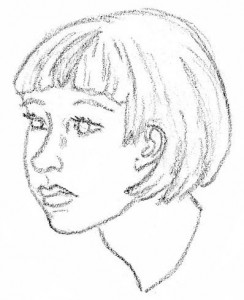
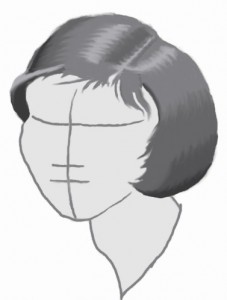
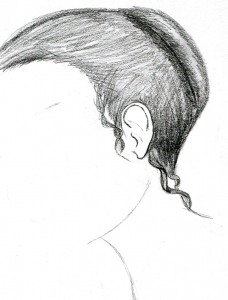
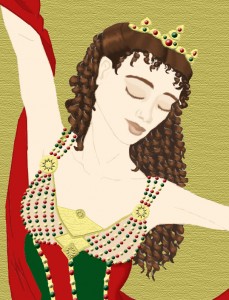
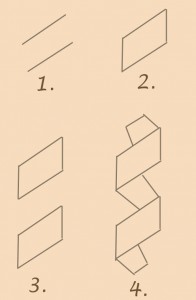
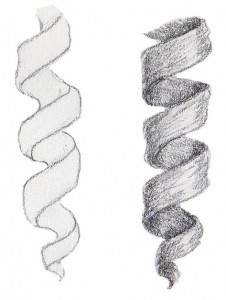
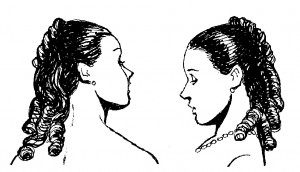
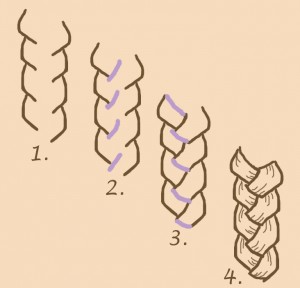
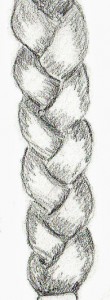
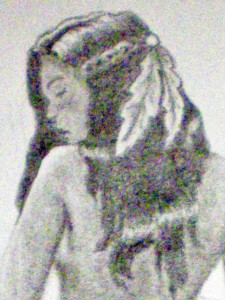
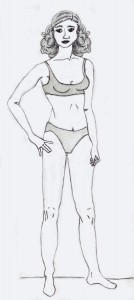
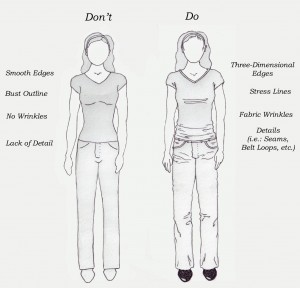
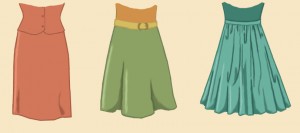

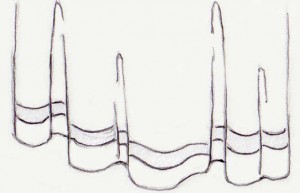
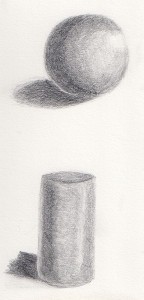
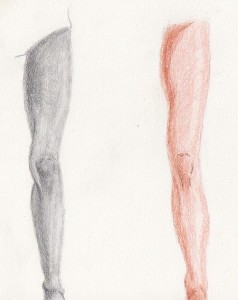
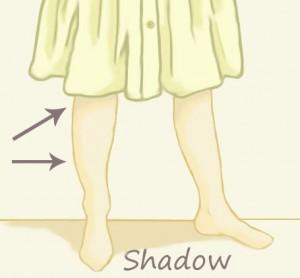
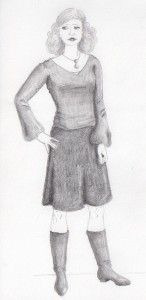
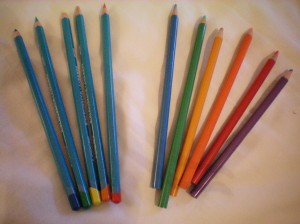
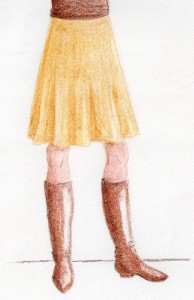
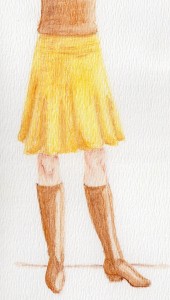
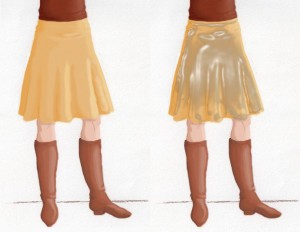
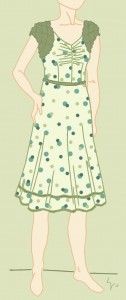
Pingback: Digital Color: Adding Color to Your Croquis | Yesterday's Thimble
Pingback: Yesterday’s Thimble at deviantART | Yesterday's Thimble